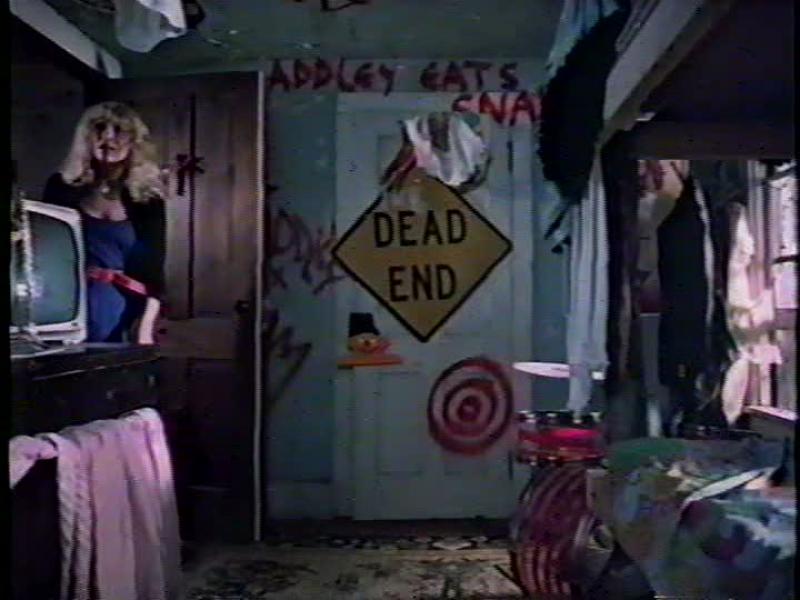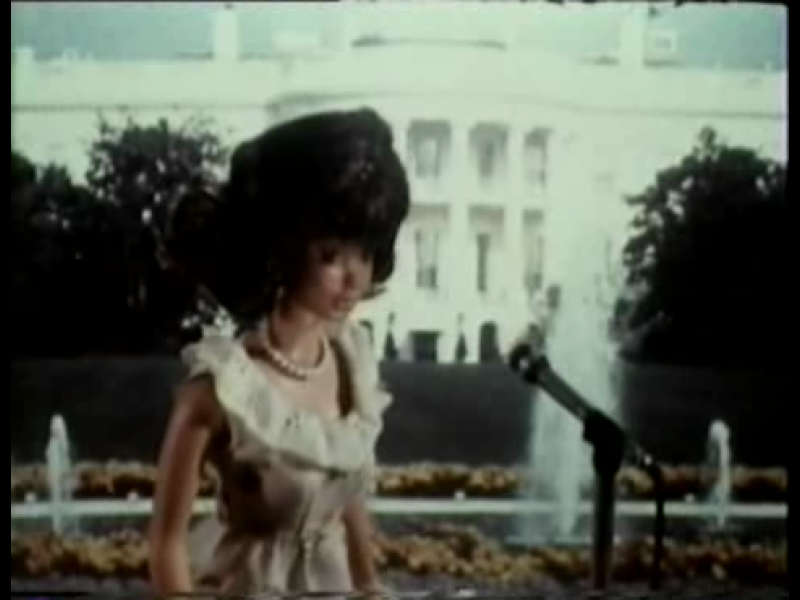
From Jerusalem
In the late 70s, the film medium's intellectual monolith Hollis Frampton announced that the video frame was "a degenerate ameoboid shape passing for a rectangle to accomodate cheap programming of late night movies." Never has this fact been more gloriously indulged than at the Museum of Art and Design's ongoing three-month celebration of everyone's magnetic tape: VHS. The series traces VHS' impact on every facet of the movie process from production to distribution, including workout tapes.
VHS assumed the throne of consumer videotape formats after defeating competeing Betamax and VX technologies. Rebecca Cleman, distribution director of Electronic Arts Intermix and one of the series' co-organizers, stressed that VHS was "an inferior format, that won over Betamax primarily because it could boast longer recording times. The poor quality of VHS, of course, makes it represent decaying technology, which always gets fetishized."
Video continues to maintain an aesthetic presence within the art world. From pioneers to contemporary practicioners, qualities associated with the aesthetic of VHS--a warm, gummy image, static lines and the low quality that comes from infinite playback--have become standbys of the gallery scene. Tonight, Cleman will present a lecture entitled Aesthetics of Analog, which will investigate the qualities of consumer video recording processes. Said Cleman: "It’s important to think beyond the VHS tape, to understand that this is part of a system of components – television, VCRs, camcorders – that created a really new culture (as of the 80s) of home video, that was very different than home movies (from film) . . . video engenders a participation that folds spectator, producer, and distributor into one."
In June, MAD showcased works like Herschell Gordon Lewis' 1967 psychic adventure Something Weird, the inspiration for Something Weird Video in 1990, which revivified Lewis' film along with works classics by Doris Wishman and David F. Friedman; and Charles Kaufman's Mother's Day, a breakout 80s VHS hit. Along with Todd Haynes' early Superstar: The Karen Carpenter Story, those films highlighted VHS' ability popularize and circulate tites that would have otherwise struggled to find an audience. Other showings included Steven Soderbergh's Sex Lies and Videotape, which put the VHS feedback loop squarely in commercial and critical consciousness while simultaneously jump-starting the 90s indie film boom, and Hellroller with Michelle Bauer, Penny Arcade, and a serial killer in a wheelchair, still one of the finest examples of a video-made genre flick.

From Mother's Day
In similar fashion, the month of July begins with the 1987 video-horror anthology Tales from the Quadead Zone, which offers an opportunity to probe the outer limits of camp. On July 13, prolific experimental filmmaker James Fotopoulos shows his 2003 Jerusalem, shot on both 8mm and VHS. Known for working in every moving-image medium imaginable and blending the avant-garde formalism with video-art grammar and a cheapo horror sensibility. The movie is beginning of a cycle culminating in Fotopoulos' more frequently seen The Pearl. The month of screenings culminates with the awesomely gory West German straight-to-VHS horror classic NEKromantik.

From Superstar: The Karen Carpenter Story
Just as the now-dying art of film projection went hand-in-hand with the great American picture palace, so did VHS require its own Xanadu: the video store. For the bulk of August, the museum will contain a fully-functioning video rental store where the lost pastime of browsing through rows of tapes can be relived, if only for a moment.

